39 the daily values found on a food label are based on
Food Labels | CDC - Centers for Disease Control and Prevention Eat fewer foods that are higher in added sugars, saturated fat, and sodium (salt), and avoid trans fat. Keep in mind that the % Daily Value of each nutrient, such as total fat of 10% in the example below, is based on eating 2,000 calories a day. Medical Definition of Daily Value - medicinenet.com The Daily Value serves as a basis for declaring on the label the percent of the DV for each nutrient that a serving of the food provides. For example, the Daily Value for fat, based on a 2,000-calorie diet, is 65 grams (g). A food that has 13 g of fat per serving would state on the label that the "percent Daily Value" for fat is 20 percent.
Learn About Percent Daily Value On Food Labels | Chegg.com Based on a 2000-calorie diet for healthy individuals, the daily value (DVs) are based on a 1,000-calorie diet. However, a greater or lower caloric intake might still be used as guidance. For example, it informs if an item is high or poor in one or more nutrients. Low- a nutrient with a 5 percent or less nutrient content and 20 percent or more ...

The daily values found on a food label are based on
The Lows and Highs of Percent Daily Value on the Label The Daily Values are reference amounts (in grams, milligrams, or micrograms) of nutrients to consume or not to exceed each day. The Daily Values have been updated, which may make the... The % daily values found on a food label are based on The question is asking what the the % daily values found on a food label are based on. Those values give us the information for example that some food is 30% of necessary daily calories or that it covers 30% of the need for Vitamin C. This is based on the needs of an average adult person, who needs to consume 2000 calories a day. Advertisement How to Understand and Use the Nutrition Facts Label | FDA The % Daily Value (%DV) is the percentage of the Daily Value for each nutrient in a serving of the food. The Daily Values are reference amounts (expressed in grams, milligrams, or...
The daily values found on a food label are based on. Nutrition Chapter 1 Flashcards | Quizlet A single serving of the food cannot contain more than 13 g of fat, 4 g of saturated fat, 60 mg of cholesterol, and 480 mg of sodium. The food must be a good source of fiber, protein, vitamin A, vitamin C, calcium, or iron. The % daily values information on a food label is based on a diet of ... Weegy: The % daily values found on a food label are based on a 2,000-calorie diet. Score 1 User: Low fat used on a food label means there are fewer than ____ grams of fat per serving Weegy: Low fat used on a food label means there are fewer than 3 grams of fat per serving. Score 1 What's New with the Nutrition Facts Label | FDA Daily Values for nutrients have been updated, which may make the percent Daily Value higher or lower on the new Nutrition Facts label. As a general guide: 5% DV or less of a nutrient per... Daily Value on the New Nutrition and Supplement Facts Labels The Nutrition Facts label must list total fat, saturated fat, trans fat, cholesterol, sodium, total carbohydrate, dietary fiber, total sugars, added sugars, protein, and certain vitamins and...
Daily Value: Definition and How to Calculate It - Insider Daily value is how much of a nutrient you should consume each day based on a 2,000 calorie diet. You will need to calculate your own daily value if you do not eat 2,000 calories a day. Daily value determines which foods are higher in healthy nutrients and lower in less healthy ones. Percent daily value - Canada.ca About percent daily value. The % DV is found on the right-hand side of a nutrition facts table. It is a guide to help you make informed food choices. It shows you if the serving size has a little or a lot of a nutrient: 5% DV or less is a little. 15% DV or more is a lot. This applies to all nutrients with a % DV. Food Labels 101 - Penn Medicine The daily values for nutrients have been updated on the revised nutrition facts label to reflect new scientific evidence. In addition to being on the back of your favorite products, nutrition information can be found in more places than usually expected. Restaurants have started to provide full nutrition data as part of their online menus. The Basics of the Nutrition Facts Label - Academy of Nutrition and ... Step 4: Check Out the Nutrition Terms. Low calorie: 40 calories or less per serving. Low cholesterol: 20 milligrams or less and 2 grams or less of saturated fat per serving. Reduced: At least 25% less of the specified nutrient or calories than the usual product. Good source of: Provides at least 10 to 19% of the Daily Value of a particular ...
Changes to the Nutrition Facts Label | FDA - U.S. Food and Drug ... It will now read: "*The % Daily Value tells you how much a nutrient in a serving of food contributes to a daily diet. 2,000 calories a day is used for general nutrition advice." 13. I heard ... How to Calculate % of Daily Value on Food Labels | livestrong A basic calculator can help to calculate the percent of daily value for specific nutrients. People often say they want to eat healthier. One of the first steps to take is examining nutritional value prior to purchasing foods. Food labels include most relevant information, including calories, fat, protein, and carbohydrate content. Understanding Food Labels | The Nutrition Source | Harvard T.H. Chan ... The Nutrition Facts Label. The Nutrition Facts label is overseen by the U.S. Food and Drug Administration (FDA) and was first mandated under the Nutrition Labeling and Education Act of 1990 to help consumers make quick, informed food choices. It has undergone revisions, with the latest update released in 2016. Changes are generally based on ... The % daily values found on a food label are based on A. a 2,000 ... The % daily values found on a food label are based on A. a 2,000-calorie diet. B. the time of year. C. whether the person is a man or woman. D. whether the food is all-natural or processed. Original conversation
Flashcards - Nutrition Unit 2 - FreezingBlue Nutrition Unit 2. According to the FDA, a food label that reads "improves memory" is an example of a. On a food label, the "% Daily Value" table compares key nutrients per serving for a person consuming how many kcalories. Which of the following ingredients on a food label is most likely a source of trans fats.
New Nutrition Facts Label in 2020: Changes and What to Know - Healthline The new nutrition facts label also includes a Daily Value (DV) percentage for added sugar, which makes it easier to understand how certain foods can fit into your diet. Note that DVs are estimated ...
Nutrition Ch. 2 **** Flashcards | Quizlet What are the principles of diet planning? a. Abundance, B vitamins, kcalories, diet control, minerals, and variety b. Abundance, balance, conservative, diversity, moderation, and vitamins c. Adequacy, bone development, correction, vitamin density, master, and variety d. Adequacy, balance, kcalorie control, nutrient density, moderation, and variety
2.4 Food Labels Flashcards | Quizlet One item that must be included on the food label is: Total Calories Standardized serving sizes: make nutritional comparisons of similar products easier How many calories are in one serving? 250 The % daily value on a food label: is based on a 2,000 calorie diet Which of the following foods are exempt from the food labeling law?
How To Read Food and Beverage Labels - National Institute on Aging The percent Daily Value (% DV) tells how much a nutrient in a serving of the food or beverage contributes to a total daily 2,000-calorie diet. Although the average person needs 2,000 calories a day to maintain their weight, individuals may need more or fewer depending on their lifestyle.
Daily Values (DVs) - National Institutes of Health DVs were developed by the U.S. Food and Drug Administration (FDA) to help consumers determine the level of various nutrients in a standard serving of food in relation to their approximate requirement for it. The label actually provides the %DV so that you can see how much (what percentage) a serving of the product contributes to reaching the DV.
The % daily values found on a food label are based on A. a 2,000 ... The % daily values found on a food label are based on A. a 2,000-calorie diet. B. the time of year. C. whether the person is a man or woman. D. whether the food is all-natural or processed. Question and answer The % daily values found on a food label are based on A. a 2,000-calorie diet. B. the time of year. C. whether the person is a man or woman.
Chapter 6: Mastering Nutrition Test (3) Flashcards | Quizlet Dietary Guidelines for Americans The Daily Values (DVs) on the food label are based on a 1,500 Calorie diet in order to discourage obesity. False Which of the following are NOT macronutrients? vitamins Which nutrient is so vital to health that you wouldn't live more than a few days without it? water
The % daily values found on a food label are based on The % daily values found on a food label are based on a. the time of year. b. whether the food is all-natural or processed. c. whether the person is a man or woman. d. a 2,000-calorie diet. 1 See answer Advertisement MarioA
Nutrition Chapter 2 Flashcards | Quizlet Percent Daily Values listed on food labels are based on an energy intake level of 2,000 Calories a day. False T/F For an adult to enjoy a food, it must have been introduced in childhood. b.) hunger The basic biological urge to eat when our body senses that we need food is a.) olfaction. b.) hunger. c.) appetite. d.) satiety. a.)
Daily Values | Dietary Supplement Label Database (DSLD) | NIH Office of ... According to the Code of Federal Regulations, the order for vitamins and minerals on the Supplement Facts label is: vitamin A, vitamin C, vitamin D, vitamin E, vitamin K, thiamin, riboflavin, niacin, vitamin B6, folate and folic acid, vitamin B12, biotin, pantothenic acid, choline, calcium, iron, phosphorus, iodine, magnesium, zinc, selenium, …
How to Understand and Use the Nutrition Facts Label | FDA The % Daily Value (%DV) is the percentage of the Daily Value for each nutrient in a serving of the food. The Daily Values are reference amounts (expressed in grams, milligrams, or...
The % daily values found on a food label are based on The question is asking what the the % daily values found on a food label are based on. Those values give us the information for example that some food is 30% of necessary daily calories or that it covers 30% of the need for Vitamin C. This is based on the needs of an average adult person, who needs to consume 2000 calories a day. Advertisement
The Lows and Highs of Percent Daily Value on the Label The Daily Values are reference amounts (in grams, milligrams, or micrograms) of nutrients to consume or not to exceed each day. The Daily Values have been updated, which may make the...


:max_bytes(150000):strip_icc()/broccoli-975473480e5c407b85cb0247ae67c303.jpg)


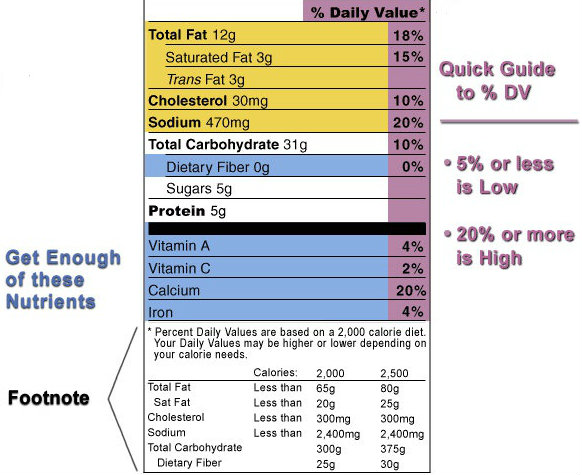







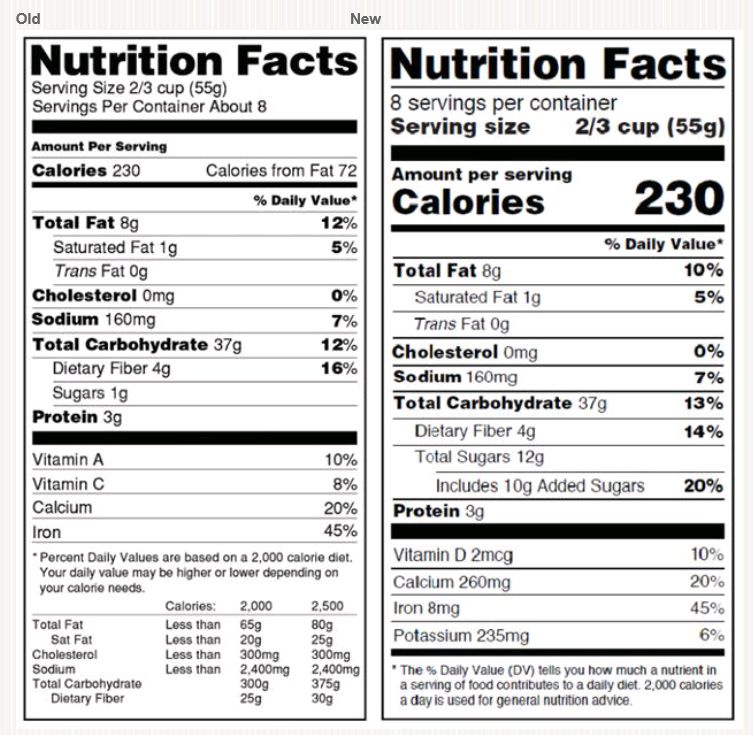
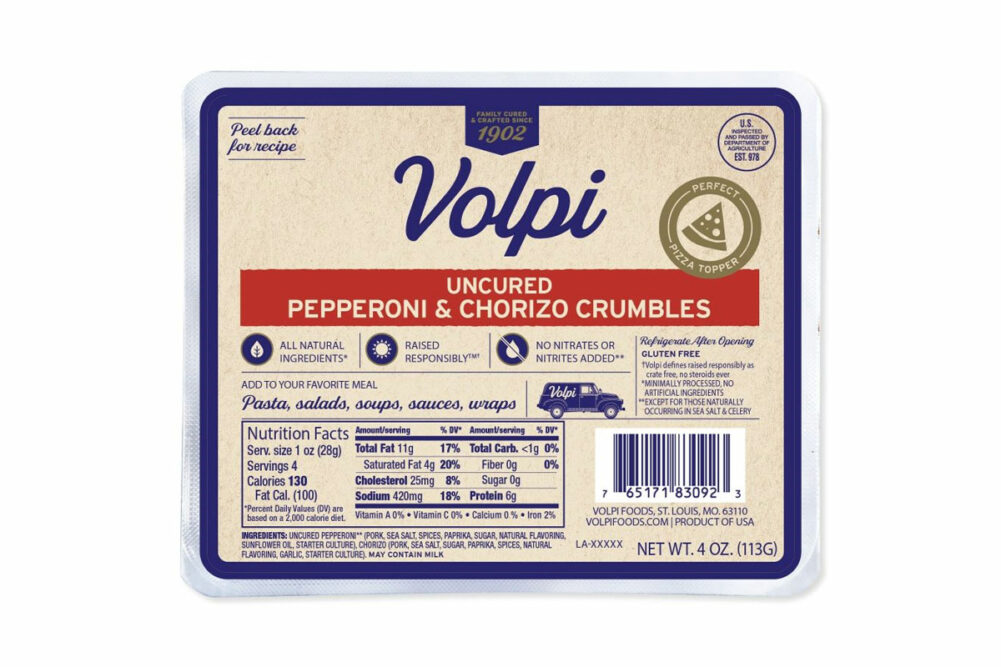


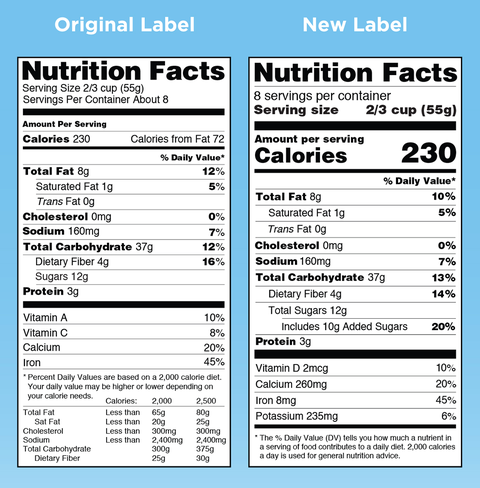


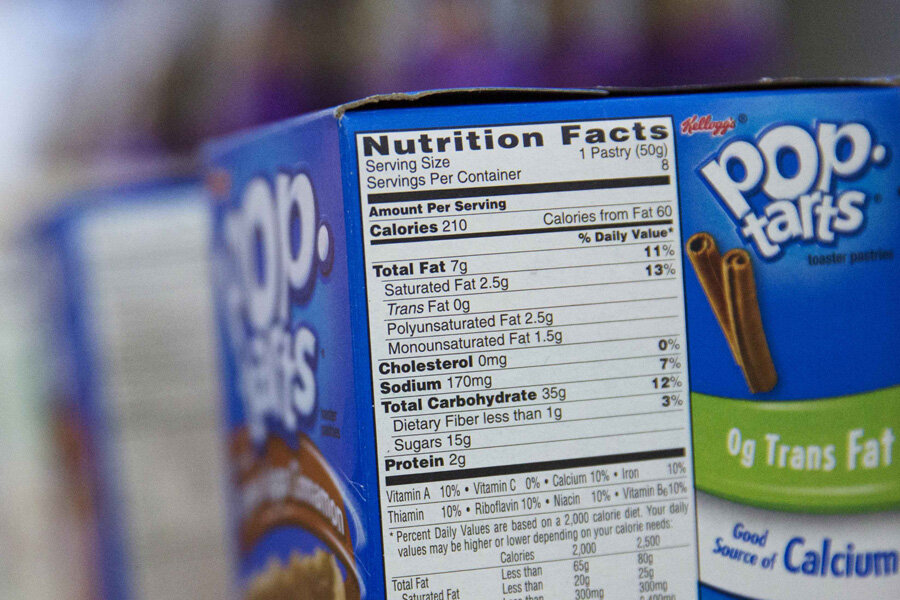


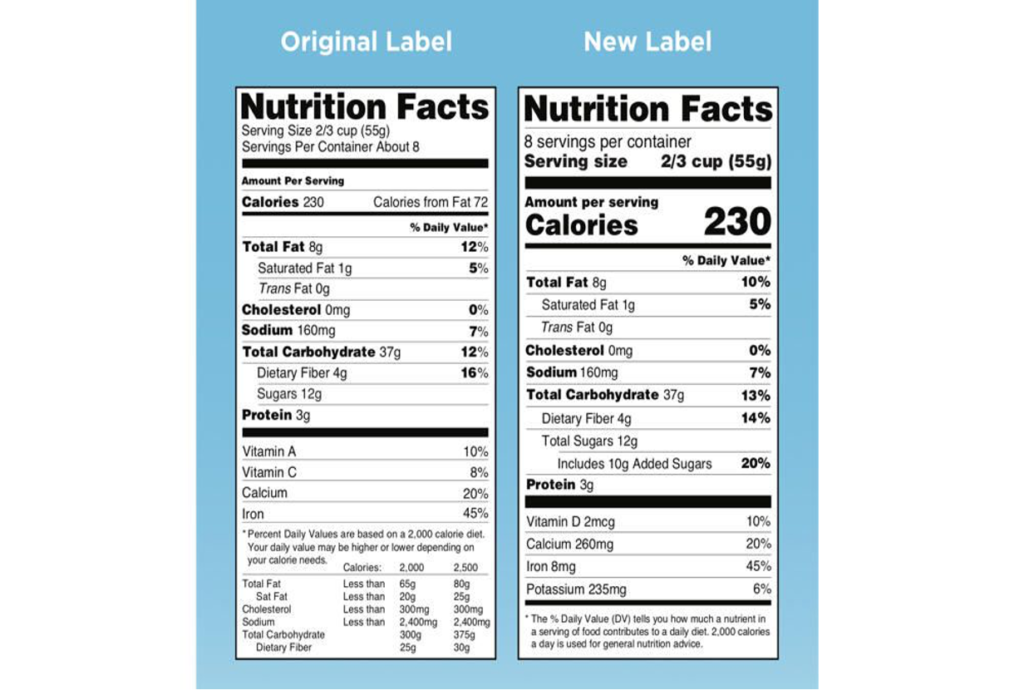


:max_bytes(150000):strip_icc()/89973696-56a5c1ff3df78cf77289c757.jpg)
Post a Comment for "39 the daily values found on a food label are based on"